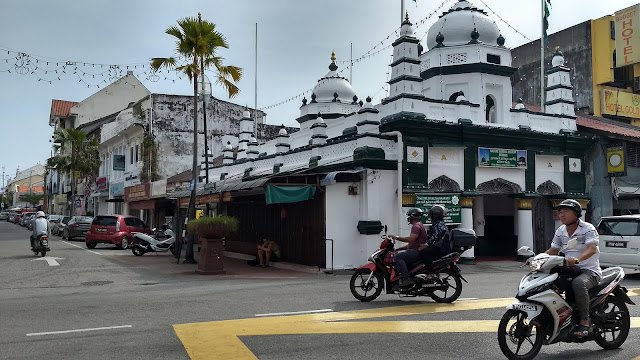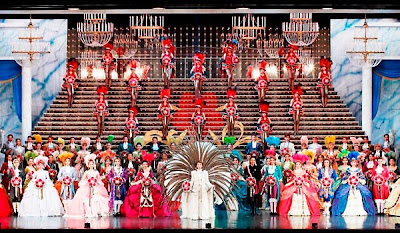Our trip to Malaysia in early 2020 was completely unexpected and entirely unplanned. We ended up traveling there because we were already on vacation in Thailand when the first news of the Covid-19 outbreak in China reached us. It was pretty surreal at first - there we were on the island of Koh Samui with a small group of our fellow foreign teachers from the PRC, ready to celebrate the wedding of two close friends - and suddenly we all started receiving emails from our universities telling us not to return until this new "flu-like" outbreak had run its course.
We were saddened by the emerging stories of people becoming seriously ill in Wuhan, and worried about how long the outbreak might last, but none of us realized at the time what it would become. So we decided to make the best of the situation and do a little traveling while we waited things out. At the time Covid had not reached any other countries, or even many other parts of China, so we were not concerned about travel risks. In retrospect, perhaps we should have been, but in those early days of late January/early February we didn't know all that we do now.
So that's how we ended up catching a ferry followed by a long bus ride down to the Malaysian state of Penang. It's the hometown of a friend of ours so we'd heard good things about it, and it definitely did not disappoint.
 |
| Goddess of Mercy Temple |
 |
| Kapitan Keling Mosque |
 |
| Hindhu statue outside one of the temples in Penang |
I have rarely been anywhere even half as multicultural as Georgetown, the capital of Penang. The state is located in the northwest of Malaysia next to the border with Thailand, and is split between the mainland and a large island where Georgetown can be reached either by ferry or bus (there are two bridges connecting the island to the mainland). Across the city Confucian and Hindu temples neighbor mosques and churches. You can eat dim sum for lunch, followed by Malaysian style shaved ice ("Ais kacang") and then get some Indian style banana leaf platters for dinner. Many languages are spoken, including English, so travel is very easy.
 |
| Dim Sum for breakfast in one of the Chinese food markets |
 |
| An Indian banana leaf platter |
The most fascinating part of Georgetown's patchwork of many cultures were all of the festivals. While we were there, the city was busy celebrating both the Lunar New Year and a major Hindu holiday known as Thaipusam. We visited the beautiful light-up event at the Kek Lok Si temple to celebrate the first holiday, and were amazed by the impressive display of millions of lights and red lanterns. The Thaipusam festivities were even grander, with huge parades, religious ceremonies at the temples, and a coconut smashing tradition that was so much fun to be included in. (Everyone smashes coconuts in the street for good luck.) The final part of Thaipusam involved a pilgrimage up to an important Hindu site called the "Waterfall Temple". Many of the pilgrims walked barefoot, carried heavy objects, fasted, or pierced their skin with hooks and bells in order to participate in the ritual of spiritual cleansing and renewal. As non-Hindus I wasn't sure at first if it was appropriate for us to visit the temple, but the participants encouraged and welcomed us on many occasions. We were invited to enter the temples, and several people took the time to explain the beliefs surrounding the holiday to us. It was a really lovely way to connect with the local culture and I am so grateful to all the friendly faces we encountered.
 |
| Lunar New Year light up at Kek Lok Si Temple |
 |
| Kek Lok Si |
 |
| A trio of Buddhas at Kek Lok Si |
 |
| Outside the Waterfall Temple |
 |
| The Silver Chariot, part of the Thaipusam celebration |
 |
| Coconuts ready for smashing at Thaipusam celebration |
It seemed like this welcoming of others was commonplace in Georgetown. There were ethnically Chinese Malaysians at the Hindu festivals. Many of them showed up at the parade to hand out free food as part of their Lunar New Year tradition of giving, and some handed us coconuts to smash. They said that it didn't hurt to try and get a little of the Hindu's good luck. Similarly, we saw people of various faiths and backgrounds at Kek Lok Si who showed up to welcome the New Year by praying to statues of Buddha and Guanyin.
I know that things are not perfect in Malaysia and there are sometimes clashes between the various ethnic groups. But Georgetown in particular seemed to offer a vision for a more harmonious community, where many different people can live alongside each other and celebrate their individual differences. I know that I certainly appreciated the many positive interactions I had with Penang locals, and I'd highly recommend stopping by to any fellow travelers.
 |
| Inside the Blue Mansion |
Some of the interesting sites we visited around the city include the Blue Mansion, the former home of one of the wealthiest Malaysian-Chinese families, which was featured in the film Crazy Rich Asians. We also stopped at a lot of beautiful Confucian and Buddhist temples and wandered around the Clan Jetties, a wharf-slash-labyrinth of ethnically Chinese homes and shops suspended over the waterfront. I also really loved seeing the vibrant street art - it reminded me a lot of Chile.
 |
| The Clan Jetties in Georgetown, Penang |
 |
| A row of houses in the Clan Jetties |
Other things to do involve walking through Little India, visiting some of the many museums, and getting out of the city to see some nature at Penang Hill or the beach town of Batu Ferringhi (more about those last two in an upcoming post.)



























Comments
Post a Comment